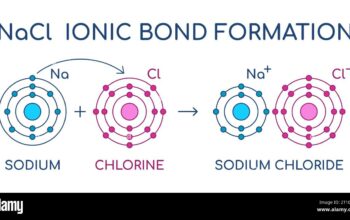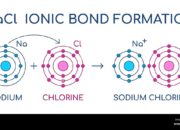In the realm of chemistry, one of the cardinal principles is the conservation of matter, which dictates that in a chemical reaction, atoms themselves remain unchanged. This fascinating aspect directs us towards understanding why atoms do not divide in the context of chemical interactions. While one might intuitively assume that chemical transformations could lead to the alteration of atomic structure, the underlying physics reveals a more intricate reality. This discourse endeavors to elucidate the crux of atomic integrity during chemical reactions, interweaving foundational principles with advanced concepts, captivating the reader’s scientific imagination.
The atomic model, primarily described by Dalton in the early 19th century and further elaborated by subsequent researchers, posits that atoms are the fundamental building blocks of matter. Each element is composed of distinctive atoms characterized by a specific number of protons, neutrons, and electrons. The implications of this model are profound; atoms serve as immutable entities in chemical reactions, wherein they reorganize rather than divide. This notion fundamentally contrasts with nuclear reactions, where the nucleus of an atom may undergo fission or fusion, altering the atomic identity itself.
To grasp the rationale behind the steadfastness of atoms during chemical reactions, one must delve into the nature of chemical bonds. Atoms interact through the established forces that govern their behavior—primarily electrostatic forces between charged particles. These interactions give rise to the formation of molecules through ionic or covalent bonds, rather than atomic division. When a chemical reaction occurs, the bonds that hold atoms together are broken or formed, yet the atoms themselves undergo no physical division. This phenomenon can be compared to a complex rearrangement of furniture within a room; the pieces may change configuration, but the furniture itself remains intact.
In scrutinizing the stability of atomic structure, one might ponder the forces that ensure this integrity. The forces holding the nucleus together, known as the strong nuclear force, are vastly more potent than the energetic interactions that characterize chemical bonds. This fundamental stability is a result of the interplay between nuclear forces mediated by particles such as gluons, which bind quarks within protons and neutrons. Consequently, the structural integrity of the atom safeguards it against the transformative effects of chemical reactions.
From a quantum mechanical perspective, understanding atomic behavior necessitates the examination of electron configurations. Electrons inhabit discrete energy levels that define their probability distributions around the nucleus. The variations in electron configurations are pivotal during chemical reactions, as they dictate how atoms engage with one another. However, electron interactions do not lead to the fragmentation of the atom itself; rather, they lead to the formation of various molecular geometries through the sharing and transferring of electrons, thereby sustaining the atomic identity.
Thermodynamics introduces another layer of complexity to the conversation. The direction of a chemical reaction is often influenced by enthalpy and entropy considerations, driving the formation of products from reactants without necessitating atomic division. The law of conservation of energy postulates that energy can neither be created nor destroyed but only transformed. In this transformation, atomic configurations may change, yet the atomic entities persist unaltered through the passage of time, exemplifying the profound harmony in nature’s framework.
Nonetheless, exceptions exist within the broader scope of nuclear chemistry, where the principles diverge. In processes such as radioactive decay, atoms may indeed fragment, emitting particles and energy. Here, the stability conferred by strong nuclear forces fails, leading to transmutations that allow for the division of atomic nuclei. However, such phenomena are quintessentially distinct from chemical reactions, wherein the loss of identity occurs at a subatomic level rather than during molecular rearrangement.
The discourse surrounding atomic indivisibility during chemical reactions extends into philosophical realms. Considerations of identity, transformation, and persistency invoke profound inquiries regarding the nature of existence itself. In contemplating the fundamental role of atoms as unyielding tenets of matter, one is invited to reconsider the very conception of change. Are atomic entities the ultimate constants in a universe governed by perpetual flux?
In summation, the resolute nature of atoms in chemical reactions is anchored in several interrelated principles, including the conservation of matter, the robustness of nuclear forces, and the intricacies of electron configurations. The interplay between these principles ensures that while the masks of elements may change, the essence of the atoms beneath remains constant. This incitement to ponder the steadfastness of atomic identity encourages a greater appreciation for the nuanced tapestry of chemical interactions that underpin the material world.
Ultimately, the indomitable nature of atoms invites curiosity and wonder—an invitation to delve deeper into the fundamental rules that govern our universe. The more one learns about these principles, the broader one’s perspective becomes, revealing a rich interplay of stability amidst the chaos of transformation. Left unchanged, atoms serve as constant reminders of the unyielding foundation of matter, compelling us to consider how these fundamental building blocks orchestrate the dance of existence.












